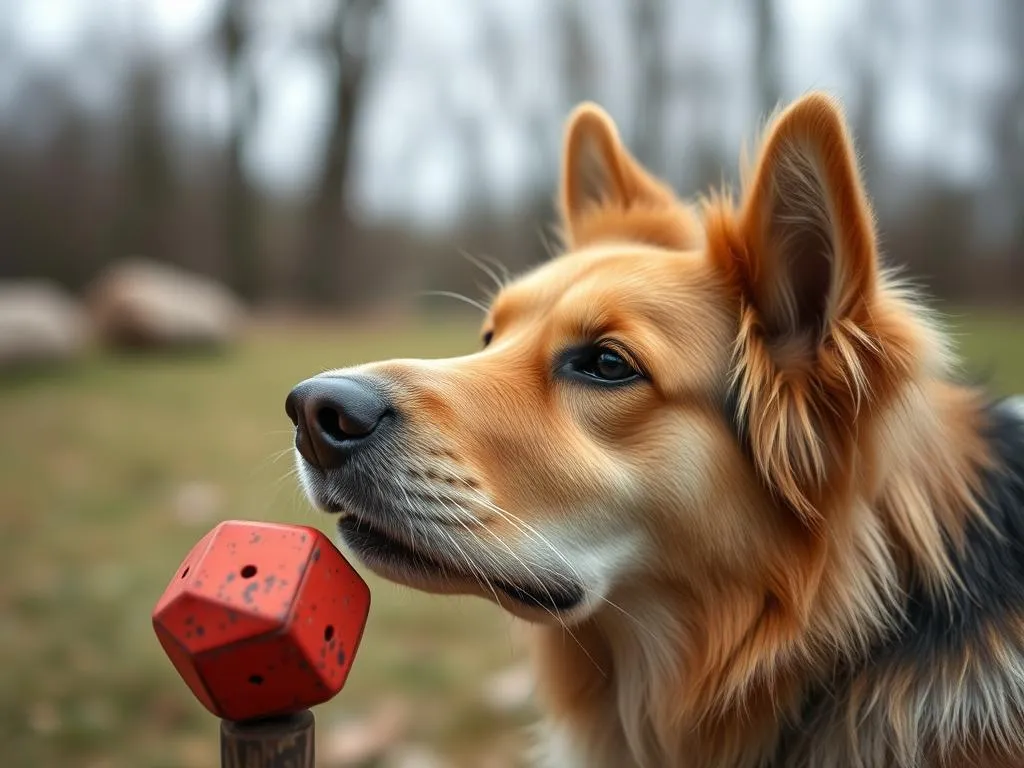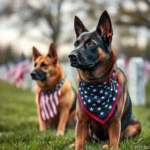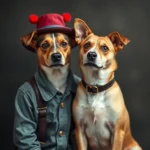
Introduction
Nose work is a fascinating and rewarding activity that taps into a dog’s natural instincts and enhances their overall well-being. It involves teaching dogs to use their sense of smell to locate specific scents, making it not only an enjoyable game but also a mentally stimulating exercise. Mental stimulation is crucial for dogs, as it helps prevent behavioral issues and promotes a happy, healthy life. In this article, you will discover various nose work games to play with your dog, from simple activities to more advanced challenges that can keep your furry friend engaged and entertained.
Understanding Nose Work
What is Nose Work?
Nose work, also known as scent work, is a canine sport that originated from professional detection work, such as search and rescue, drug detection, and tracking. It allows dogs to use their incredible olfactory abilities in a fun and safe environment. In this activity, dogs are trained to identify specific scents and locate hidden items, replicating tasks performed by scent detection dogs in various fields.
Benefits of Nose Work for Dogs
Engaging in nose work games to play with your dog provides a multitude of benefits:
-
Mental Stimulation: Dogs thrive on mental challenges. Nose work stimulates their minds, keeping them sharp and alert. This mental engagement is essential for their cognitive development and emotional well-being.
-
Physical Benefits: While nose work primarily focuses on mental stimulation, it also encourages physical activity. Dogs often move around, search, and explore, promoting exercise and coordination.
-
Behavioral Improvements: Many dogs who participate in nose work show reduced anxiety, boredom, and destructive behaviors. The focus required for scent detection helps channel their energy positively, leading to a calmer and more well-adjusted pet.
Getting Started with Nose Work
Necessary Equipment
To start your nose work games to play with your dog, you will need some basic supplies:
-
Treats: Choose high-value treats that your dog loves. These will serve as rewards and motivators throughout the games.
-
Containers: You can use boxes, plastic containers, or even paper bags to hide treats or toys.
-
Scent Materials: Essential oils or specific scents can be used to train your dog to recognize particular odors. You can also use items such as cotton balls soaked in scents.
Optional tools include scent kits available in pet stores and training books that provide guidance on nose work techniques.
Choosing the Right Environment
When it comes to playing nose work games, selecting the right environment can significantly impact your dog’s performance:
-
Indoor vs. Outdoor Settings: Indoor settings can be controlled and distraction-free, making them ideal for beginners. Outdoor environments may present more challenges due to various scents and distractions, but they offer a broader space for exploration.
-
Creating a Safe Space: Whether indoors or outdoors, ensure that the area is free from hazards. Remove any toxic plants or substances that could harm your dog during playtime.
Safety Considerations
Supervision is essential during nose work activities. Always keep an eye on your dog to prevent them from ingesting anything harmful or straying too far. If you’re playing outdoors, be mindful of the environment, ensuring it’s secure for your dog to explore safely.
Basic Nose Work Games
Hide and Seek
One of the simplest yet most enjoyable nose work games to play with your dog is Hide and Seek. This game encourages your dog to use their nose and problem-solving skills.
Setup:
1. Begin by having your dog stay in one room while you hide in another.
2. Once you’re hidden, call your dog to come find you. When they locate you, reward them with treats and praise.
Instructions:
1. Start with short distances and gradually increase the difficulty by hiding in more challenging spots.
2. Encourage your dog to use their nose by rewarding them for following your scent trail.
3. Keep the game fun and light-hearted, allowing your dog to enjoy the thrill of the hunt.
Scent Discrimination
Scent discrimination is a fantastic way to train your dog to distinguish between different odors. This game sharpens their olfactory skills and enhances their focus.
Setup:
1. Gather several small containers and place a different scent in each (e.g., vanilla, peanut butter, or lavender).
2. Introduce your dog to the scents one by one, allowing them to sniff and explore.
Instructions:
1. Once your dog is familiar with the scents, present them with two containers and ask them to identify the one with the target scent.
2. Reward them when they select the correct container. Gradually increase the number of containers to make the game more challenging.
3. Consistently practice to reinforce their learning.
Treasure Hunt
Treasure Hunt is another exciting game that involves hiding treats or toys for your dog to find. This game can be adapted to various skill levels and is sure to engage your dog’s natural hunting instincts.
Setup:
1. Begin by hiding treats or toys around a designated area (indoors or outdoors).
2. Start with easy-to-find locations and gradually increase the difficulty by hiding the items in more challenging spots.
Instructions:
1. Encourage your dog to search for the hidden treasures by using phrases like “find it!” to trigger their hunting instinct.
2. As your dog becomes more adept at finding the hidden items, you can increase the complexity of the hiding spots or introduce new scents to keep it interesting.
3. Make sure to praise and reward your dog each time they successfully find a hidden treasure.
Intermediate Nose Work Challenges
Box Search
As your dog becomes more comfortable with basic nose work games, you can introduce the Box Search challenge. This game enhances their search skills and encourages them to use their nose effectively.
Setup:
1. Gather several cardboard boxes or containers and place them in a designated area.
2. Hide a treat or toy in one of the boxes while your dog is out of sight.
Instructions:
1. Bring your dog back to the area and encourage them to search through the boxes to find the hidden item.
2. Reward them when they successfully locate the treat or toy.
3. To increase difficulty, you can add more boxes or change the hiding location frequently.
Container Search
Container Search is a variation of the Box Search that allows for more creativity in hiding items. This game encourages your dog to explore various containers and enhances their scent discrimination skills.
Setup:
1. Gather a collection of different containers, such as jars, baskets, and boxes.
2. Hide a treat or toy in one of the containers while your dog is away.
Instructions:
1. Encourage your dog to search through the containers to find the hidden item.
2. As your dog becomes more proficient, add more containers or change the types of containers to keep the game engaging.
3. Celebrate their successes with treats and praise to reinforce their efforts.
Scent Trail
Creating a scent trail is an exciting way to challenge your dog’s tracking abilities. This game mimics real-life scent detection tasks and can be a lot of fun.
Setup:
1. Choose a scent (like a favorite treat or essential oil) and create a trail by placing small drops or pieces leading to a hidden item.
2. Allow your dog to sniff the starting point before letting them follow the trail.
Instructions:
1. Encourage your dog to follow the scent trail to find the hidden treat or toy.
2. Vary the length and complexity of the scent trail to match your dog’s skill level. You can also change the scents used to keep the game fresh and exciting.
3. Reward your dog every time they successfully follow the trail, reinforcing their tracking abilities.
Advanced Nose Work Activities
Scent Detection Trials
For those wanting to take nose work to the next level, considering participation in organized scent detection trials can be a rewarding experience. These trials mimic real-life scent detection scenarios and can be a fun way to bond with your dog.
Preparation:
1. Research local scent detection trials and familiarize yourself with the rules and requirements.
2. Practice regularly with your dog to ensure they are comfortable with various scents and scenarios.
Expectations:
1. Trials typically involve a series of challenges where your dog must locate specific scents within a designated area.
2. Preparing for these trials can enhance your dog’s skills and build their confidence.
Advanced Scent Games
Once your dog is proficient in basic nose work, you can introduce more complex scent games that involve multiple scents and distractions. These games will challenge their abilities and keep them engaged.
Examples:
– Scent Puzzles: Create puzzles that require your dog to solve problems to access hidden treats.
– Multiple Scents: Introduce various scents in one game, requiring your dog to focus on identifying specific ones among distractions.
Engaging in Nose Work Classes
Enrolling in professional nose work classes can greatly benefit you and your dog. Experienced trainers can provide valuable insights and guidance to enhance your nose work experience.
Benefits:
1. Professional classes often offer structured training that can improve your dog’s skills significantly.
2. You will learn new techniques and games, making your practice sessions more effective and enjoyable.
Tips for Success
Positive Reinforcement
Using positive reinforcement is crucial in nose work training. Rewarding your dog with treats and praise encourages them to engage and enjoy the games.
Choosing Effective Treats:
– Use high-value treats that your dog loves. This will motivate them to participate and stay focused during training sessions.
Keeping Sessions Short and Fun
To maintain your dog’s interest, keep training sessions short and enjoyable. Overly long sessions can lead to frustration or boredom.
Recommendations:
1. Aim for sessions of 5 to 15 minutes, depending on your dog’s age and energy level.
2. Look for signs that your dog may need a break, such as losing focus or becoming disinterested.
Regular Practice and Variety
Consistency is key to improving your dog’s nose work skills. Regular practice allows your dog to build confidence and proficiency in scent detection.
Mixing Up Games:
– Introduce variety in your training to keep it exciting. Change the games, scents, and environments to ensure your dog remains engaged and stimulated.
FAQ About Nose Work Games
What breeds are best for nose work?
While many breeds can excel in nose work, breeds with strong scenting abilities, such as Bloodhounds, Beagles, and German Shepherds, often do particularly well. However, any dog, regardless of breed, can enjoy and benefit from nose work activities.
How often should I practice nose work with my dog?
Practicing nose work a few times a week is ideal for reinforcing skills and keeping your dog engaged. Short, regular sessions are more beneficial than infrequent, lengthy practices.
Can nose work help with behavioral issues?
Yes! Nose work can be an effective way to alleviate behavioral issues in dogs. The mental stimulation and focus required for scent detection can reduce anxiety and boredom, leading to improved behavior.
What if my dog loses interest in nose work?
If your dog seems to lose interest, try changing the game, using different scents, or adjusting the difficulty level. Keeping the activities fresh and challenging can help maintain their enthusiasm.
Conclusion
Engaging in nose work games to play with your dog offers a multitude of benefits, including mental stimulation, physical exercise, and improved behavior. By incorporating various games and challenges, you can create a fun and enriching experience that strengthens the bond between you and your furry friend. So why not grab some treats, set up a game, and watch your dog thrive in this exciting activity?









